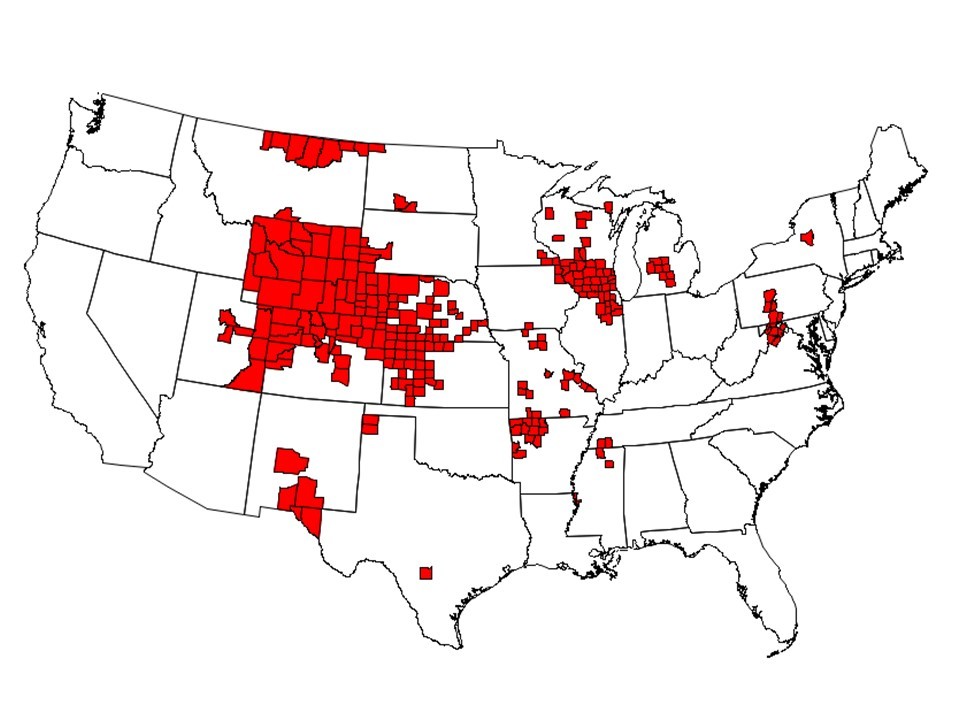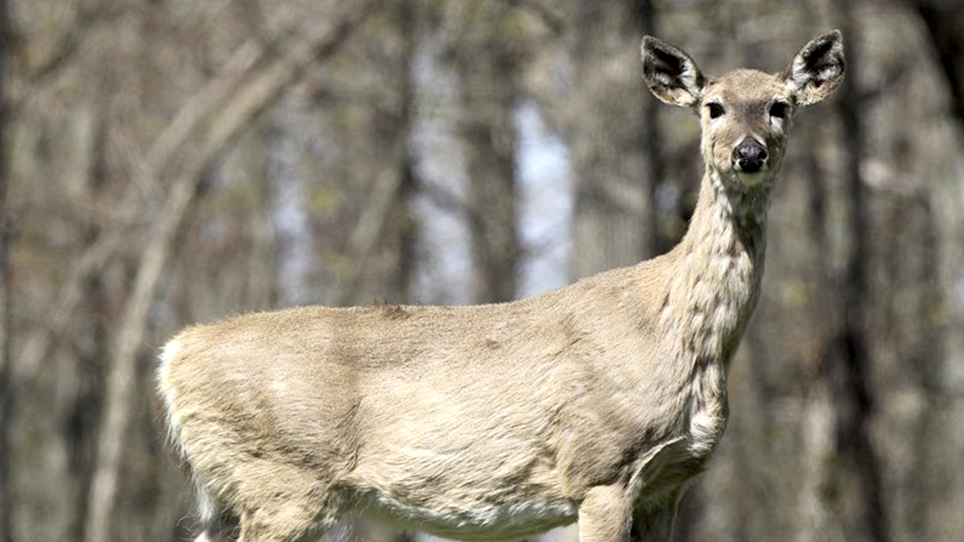As a former customer service representative for my state’s wildlife agency, the Wisconsin Department of Natural Resources, I received quite a few questions about CWD. There are misconceptions about this relatively new disease that’s only been on the radar for about 50 years or so. Every hunter should know at least a little about CWD and how it spreads. If it isn’t in the state you hunt already, trends suggest it could be soon.
New cases of CWD have been confirmed in at least a dozen states in the last decade. Here are some of the more common questions I’ve heard over the years about CWD.
Q.
What is CWD?
A.
CWD is a neurological disease affecting members of the deer family including whitetail deer, mule deer, elk and moose. CWD is believed to be 100 percent fatal for infected animals. It is classified as a transmissible spongiform encephalopathy or TSE, similar to mad cow disease and scrapie. As the name implies, this disease causes a spongy degeneration of the brain tissue and leads to erratic behavior, loss of balance, malnourishment and death.
Q.
What if I eat meat from an animal that is infected with CWD?
A.
While you may be anxious to try the latest recipe from Wild Eats, the Centers for Disease Control and Prevention (CDC) and the World Health Organization (WHO) recommend not eating meat from animals that appear unhealthy or have tested positive for CWD. Many states that have confirmed cases of CWD have testing available to hunters at little or no cost. Animals harvested in known CWD hot spots should be tested and confirmed CWD-negative before being consumed.
Q.
What are prions?
A.
Simply put, prions are mutated proteins that researchers believe are responsible for spreading the disease from animal to animal. According to the CDC, “The term ‘prions’ refers to abnormal, pathogenic agents that are transmissible and are able to induce abnormal folding of specific normal cellular proteins that are found most abundantly in the brain. The abnormal folding of the prion proteins leads to brain damage and characteristic signs and symptoms of the disease.”
Q.
Where are CWD prions located?
A.
Prions are most commonly found in the central nervous system and lymph nodes of an infected animal. It’s suggested that hunters avoid contact with these areas when field dressing and butchering wild game. Boning out the meat instead of using a saw to cut through the backbone and spinal cord are two ways to reduce the risk of exposure to the prions. The lymph nodes are a bit trickier to avoid because they’re buried in between some muscle groups. The lymph nodes typically sampled for CWD testing are near the base of the tongue, but there are other lymph nodes in the front and hind quarters.
Q.
Where did CWD originate?
A.
It may be impossible to determine where CWD first originated, however it was first identified in 1967 in a captive mule deer at the Colorado Division of Wildlife Foothills Wildlife Research Facility in Fort Collins, Colorado. Since then it has been confirmed in free-ranging deer, elk or moose in at least 23 states, two Canadian provinces and two countries outside of North America.
Q.
Where has CWD been found in wild deer/elk/moose?
A.
As of January 2019, there were 251 counties in 24 states with reported CWD in free-ranging cervids, according to the CDC. This map is based on the best-available information from multiple sources, including state wildlife agencies and the United States Geological Survey (USGS).
States where CWD has been detected include: Arkansas, Colorado, Illinois, Iowa, Kansas, Maryland, Michigan, Minnesota, Mississippi, Missouri, Montana, Nebraska, New Mexico, New York, North Dakota, Pennsylvania, South Dakota, Texas, Utah, Virginia, West Virginia, Wisconsin and Wyoming. Map courtesy of CDC.

Q.
Can CWD spread to humans?
A.
There is no scientific evidence that CWD can be transmitted to humans, although there are some conflicting studies that show it may or may not be transmissible to macaques. One ongoing study by Canadian and German scientists that began in 2009 shows several macaques tested positive for CWD after consuming meat or brain tissue of CWD-infected deer and elk. There is some doubt surrounding the validity of the testing method used and its tendency to result in false positives. A study published in the Journal of Virology titled, “Lack of Transmission of Chronic Wasting Disease to Cynomolgus Macaques,” presented new data that “there was no clinical, pathological or biochemical evidence suggesting that CWD was transmitted from cervids to macaques.”
Q.
Can dogs get CWD?
A.
It hasn’t been proven that CWD is transmissible to dogs. However, it is not recommended to feed the meat of a potentially CWD-infected animal to a dog or any other animal. Meat from a deer that tests positive for CWD should be disposed of in a landfill that accepts deer waste.
Q.
Are CWD and mad cow disease the same thing?
A.
CWD and mad cow disease (bovine spongiform encephalopathy or BSE) are both prion diseases known as transmissible spongiform encephalopathies or TSEs. Other TSEs include scrapie in sheep and goats and variant Creutzfeldt-Jacob disease (vCJD). Although strong evidence suggests vCJD can be linked to BSE; CWD and BSE are separate diseases affecting different species of animals.
Q.
What are the symptoms of CWD?
A.
The symptoms of CWD may take a year or longer to manifest after a deer has been infected. The most recognizable symptoms include drastic weight loss, stumbling and lack of coordination, listlessness, drooling and excessive thirst or urination, drooping ears and a lack of fear of people or abnormal aggression. Many of these symptoms will also result from other illnesses or injuries, so it isn’t possible to positively diagnose CWD based solely on these symptoms. If you observe a deer exhibiting these symptoms, contact your state wildlife agency and let them know what you saw and where.
Q.
What is being done to stop the spread of CWD?
A.
While CWD research is ongoing, most prevention methods currently involve slowing or preventing the spread of the disease. Many states have adopted carcass transportation regulations, not only involving deer moved within the state, but also the import of deer from CWD-affected states. Some states, like Wisconsin for example, will conduct extensive sampling around new CWD hot spots to help determine the distribution of infected animals. Bans on baiting and feeding are also implemented in many areas where CWD has been found. These bans reduce the likelihood that infected animals will unnaturally congregate with CWD-free animals leading to higher rates of CWD transmittance.
Related: New Research Zeros in on How CWD is Spreading
Q.
What can hunters do to help prevent the spread of CWD?
A.
The first step is to familiarize yourself with CWD, especially if you live in or near an area where CWD has been confirmed. This article scratches the surface, but there’s quite a bit more information available through your state wildlife agency and websites like www.cwd-info.org and www.cdc.gov. Besides being informed about CWD, you need to know your state’s regulations regarding CWD. Some areas you hunt may have a baiting and feeding ban, or you may be restricted to what parts of the animal you can take home. Following these regulations could not only prevent citations, but also help prevent the unnatural spread of CWD. Harvesting enough animals to keep population densities in check may also slow the spread of CWD. As hunters, we need to do our part to protect the tradition of hunting for future generations.
Related Articles and Resources
Where CWD-infected Deer Go to Die
Time to Get Serious About the Spread of CWD
This Map Spells Trouble for the Future of Deer Hunting (QDMA)
Chronic Wasting Disease Is Spreading, Can It Be Stopped?
Chronic Wasting Disease resource page (CDC)
The New York Times Drops Report on How CWD Is Threatening Deer
Featured image: Arkansas Game and Fish Commission






